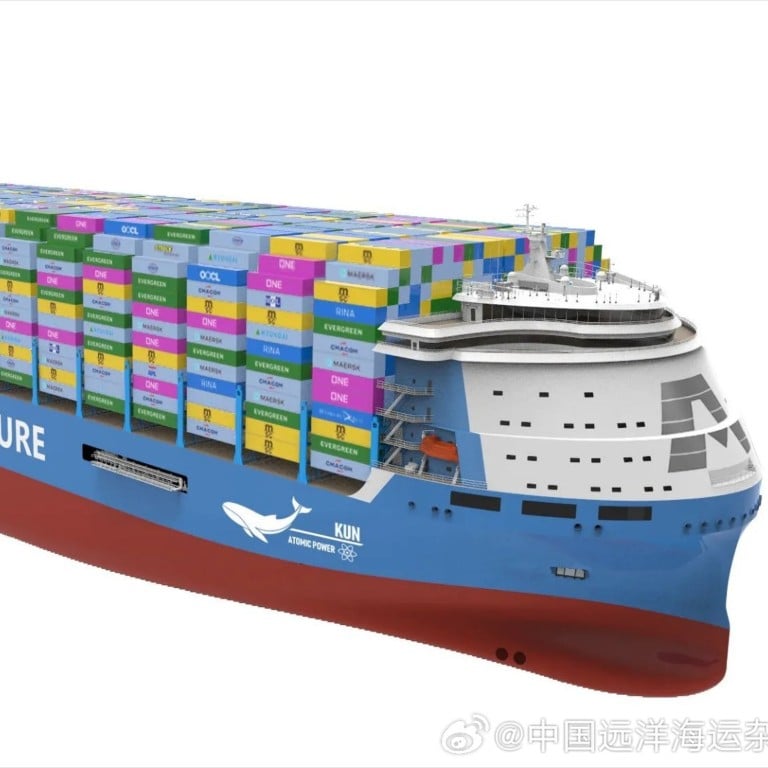
Chinese shipyard unveils plans for world’s first nuclear container powered by cutting-edge molten salt reactor
- The technology used to power the giant container could prove safer and more efficient than the uranium reactors currently used to power warships
- China has released little information about its first thorium-powered reactor, completed earlier this year, possibly because of its military applications
A Chinese shipyard has unveiled a design for an innovative new giant container ship powered by a reactor that one industry journal said may offer a true “zero-emissions” alternative.
Unlike the nuclear reactors found on warships powered by uranium, this new reactor is likely to use a radioactive metal called thorium, which is abundant and inexpensive in China.
The reactor will not need large amounts of water to cool down, making it safer and more efficient.
However, the technology is complex, and most countries have given up on trying to develop it after decades of fruitless efforts, including the United States which looked into the possibility of using it to power a long-range bomber.
China unveils design for first waterless nuclear reactor
Most of the research carried out for the project is classified – perhaps because of the technology’s possible military uses – and little information has been made available.
The design for the new container ship – known as the KUN-24AP – was unveiled by the Shanghai-based Jiangnan Shipyard at the city’s Marintec China exhibition.
The unveiling suggests China now has considerable confidence in the technology and is ready to promote it to the rest of the world.

The DNV Classification Society – one of the leading international shipping industry bodies – has already given the design an international certification that should increase international buyers’ confidence about buying and using the design.
“In response to climate change and energy conservation requirements, Jiangnan Shipbuilding has actively explored container ship models and power systems solutions,” the journal Maritime China posted on a its official WeChat account.
“The new ship model uses nuclear energy as a clean energy source and adopts an internationally advanced fourth-generation molten salt reactor solution. The proposed design of super-large nuclear container ships will truly achieve ‘zero emissions’ during the operation cycle of this type of ship,” it added.
China is not the first country in the world to propose such a concept. Shipbuilders from Japan, the United States, South Korea, and Europe have come up with similar designs.
Chinese scientists urged to develop new thorium nuclear reactors by 2024
However, their ship models are generally small, and none of these countries has a modern and reliable operating reactor to make the design a reality.
China’s shipbuilding industry has made rapid progress in recent years and this year it accounted for more than 60 per cent of orders for new ships globally, according to industry analysts– many of them for technically demanding orders such as liquefied natural gas carriers.
The development of the civil shipbuilding industry has also greatly accelerated the expansion of China’s navy, including ships using advanced technology such as ultra-long-range radar and electromagnetic launch systems.

